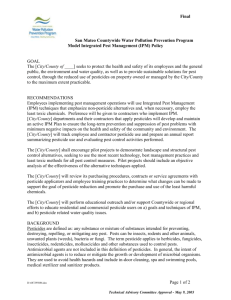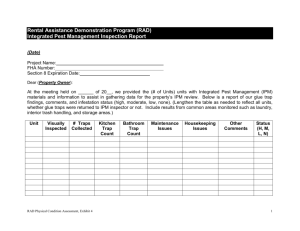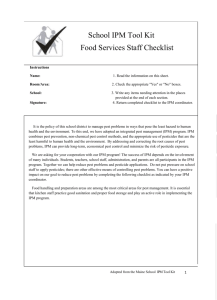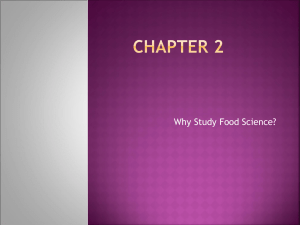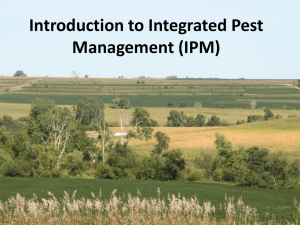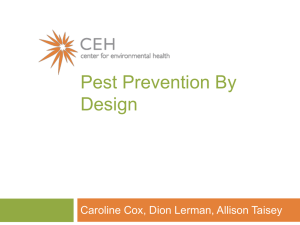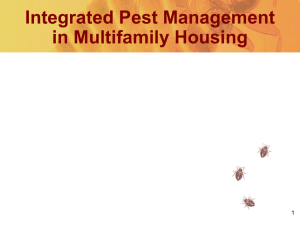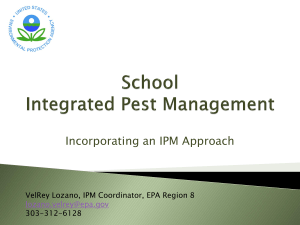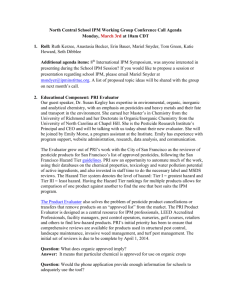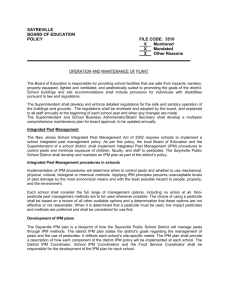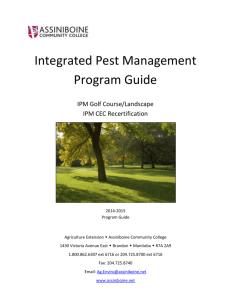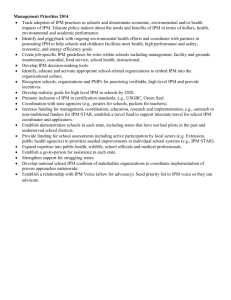Grounds Managers, Landscapers Checklist
advertisement
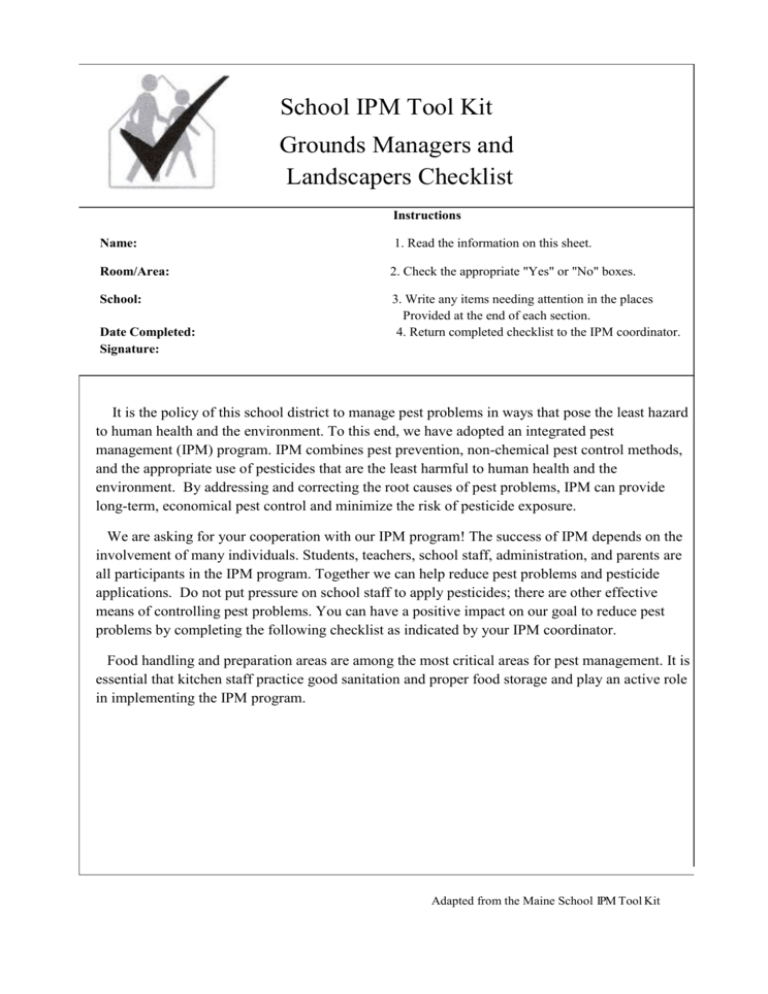
School IPM Tool Kit Grounds Managers and Landscapers Checklist Instructions Name: 1. Read the information on this sheet. Room/Area: 2. Check the appropriate "Yes" or "No" boxes. School: 3. Write any items needing attention in the places Provided at the end of each section. 4. Return completed checklist to the IPM coordinator. Date Completed: Signature: It is the policy of this school district to manage pest problems in ways that pose the least hazard to human health and the environment. To this end, we have adopted an integrated pest management (IPM) program. IPM combines pest prevention, non-chemical pest control methods, and the appropriate use of pesticides that are the least harmful to human health and the environment. By addressing and correcting the root causes of pest problems, IPM can provide long-term, economical pest control and minimize the risk of pesticide exposure. We are asking for your cooperation with our IPM program! The success of IPM depends on the involvement of many individuals. Students, teachers, school staff, administration, and parents are all participants in the IPM program. Together we can help reduce pest problems and pesticide applications. Do not put pressure on school staff to apply pesticides; there are other effective means of controlling pest problems. You can have a positive impact on our goal to reduce pest problems by completing the following checklist as indicated by your IPM coordinator. Food handling and preparation areas are among the most critical areas for pest management. It is essential that kitchen staff practice good sanitation and proper food storage and play an active role in implementing the IPM program. Adapted from the Maine School IPM Tool Kit Inspections and Pest Monitoring Yes No 0 0 Insect monitoring traps and glue boards or mouse traps are used to monitor for crawling insects Waste Management Yes No 0 0 An adequate number of trash receptacles are in place where people use outdoor benches and dining areas and are likely to leave food debris behind. 0 0 Outdoor trash receptacles (preferably metal) have self-closing lids, are kept clean, and are emptied daily. 0 0 Trash receptacles with an open design, such as wire mesh, have openings less than ¼” in diameter. 0 0 Trash receptacles are elevated off the ground. 0 0 Empty beverage containers are double-rinsed, kept in tightly sealed pest-proof containers, and removed daily. 0 0 Food concession buildings (snack shacks) are regularly inspected, kept clean, pest free, well sealed, with all food sealed in pest-proof containers. Action needed: Completed (Date/Initials) Adapted from the Maine School IPM Tool Kit Water Management Yes No 0 0 Water does not pool for any period of time anywhere on school grounds. 0 0 Gutters and drainpipes are regularly cleaned and in good condition. 0 0 Vehicle tires are not used in play areas or have drainage holes that prevent them from collecting water and are inspected regularly for standing water and wasp nests. Action needed: Completed (Date/Initials) Adapted from the Maine School IPM Tool Kit Landscaping Yes No 0 0 School grounds are regularly scouted for weeds, insects and diseases. 0 0 Bark and wood chips are kept more than 12 inches from building). 0 0 Where possible, trees and shrubs are trimmed to have at least 12 inches of clearance between the ground and foliage and more than 12 inches from foliage to building. 0 0 Climbing vines are removed from exterior walls. 0 0 Tree limbs are trimmed to at least 6 feet (10 feet if squirrels are a problem) away from building and roof. 0 0 Leaves and other clutter that accumulate along foundations, retaining walls, etc. are removed promptly. 0 0 Walls and fence lines are kept free from weeds and debris that might provide pest shelter. 0 0 A list of approved plants is developed and maintained for the school. 0 0 Plants selected for planting, including gardens and memorial plantings, are appropriate for each site. 0 0 Pest and drought resistant plants that are native, or non-invasive alien plants from similar climates, are used for new landscaping. 0 0 Plants that shed a minimum of seeds and fruits are used for landscaping. 0 0 Fallen seeds and fruit from ornamental plantings are picked up and disposed of promptly. 0 0 Soil and pavement directly adjacent to buildings and retaining walls are graded away from buildings. Drainage is adequate to account for roof and pavement runoff, sprinkler systems, down spouts, etc. 0 0 Outdoor "bug zappers" are not used. Action needed: Completed (Date/Initials) Adapted from the Maine School IPM Tool Kit

